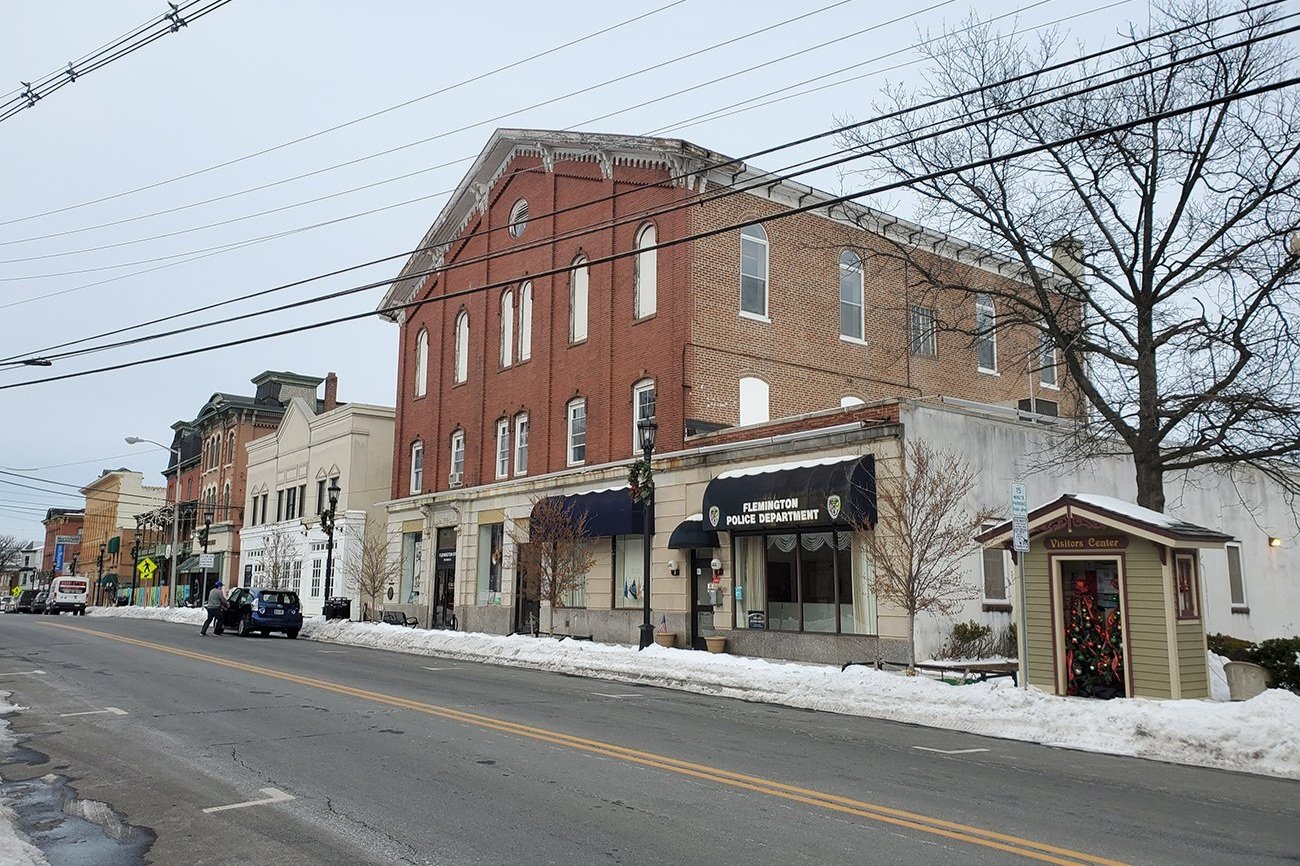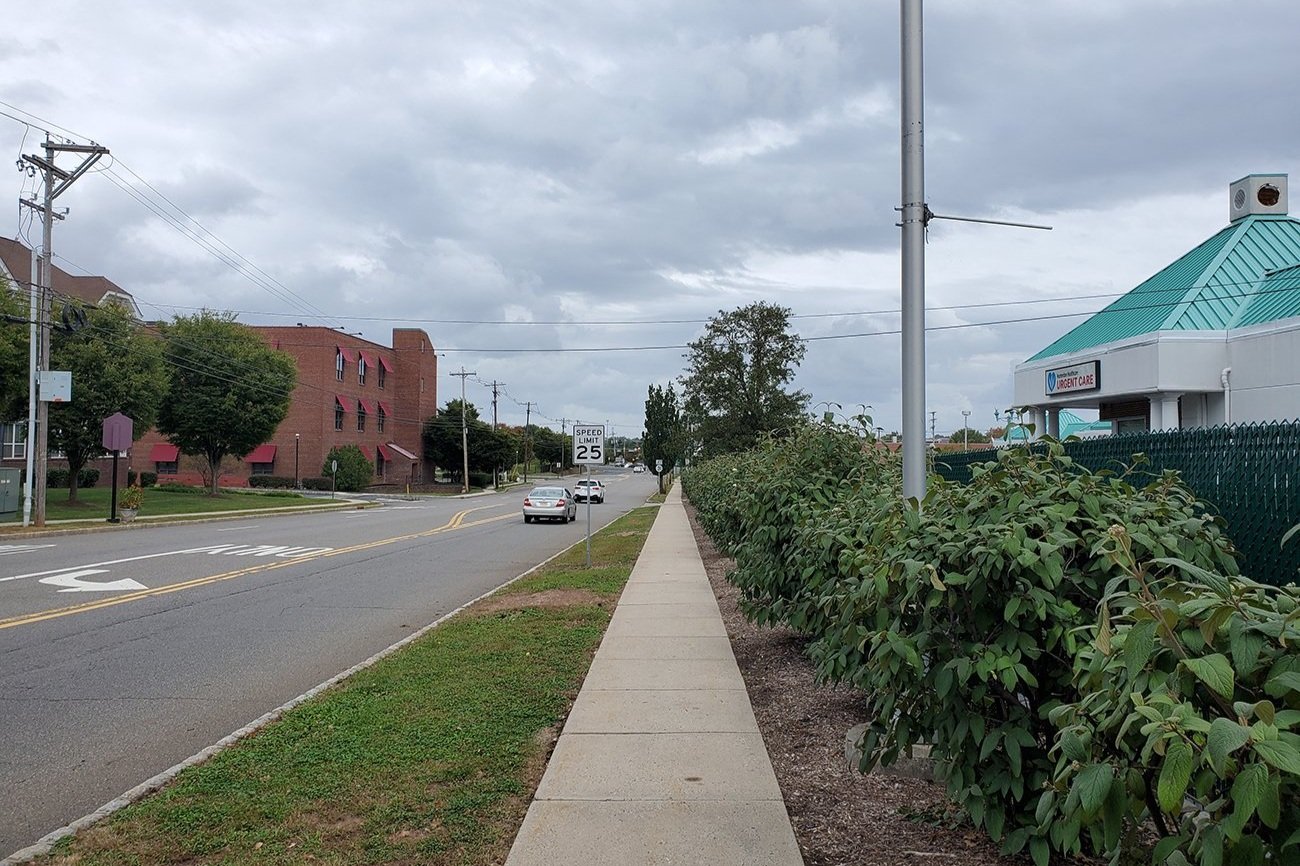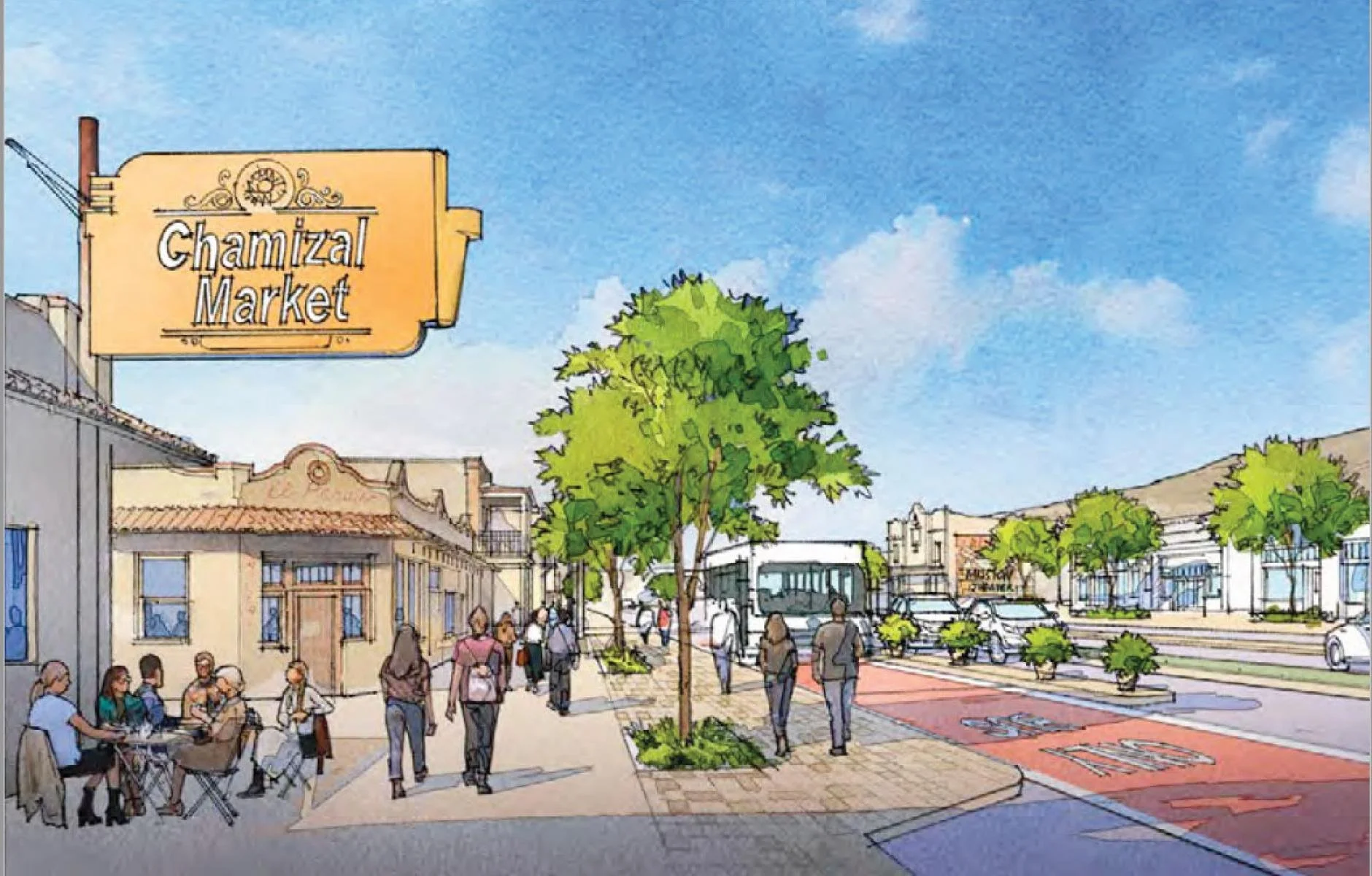Can New Jersey Supermarkets Predict an End to the Suburban Experiment?
As I’ve learned more about my hometown’s history—Flemington, the county seat of central Jersey’s semi-rural Hunterdon County—the history of the town’s supermarkets has intrigued me more than anything else.
Towns of this size, which only ever had at most a few blocks of dense, tall, mixed-use construction, were usually not touched by urban renewal (though it was not unheard of; Rockville, Maryland, demolished virtually its entire downtown in the 1960s for an office park). The trend away from classic urbanism toward the suburban development pattern did touch these places. But rather than destroying them, it generally left their underlying function transformed while leaving them mostly intact physically.
Flemington once had a number of grocery stores and small food markets, and at the dawn of the suburban era, it had three bona fide supermarkets. These were not old-fashioned counter-service grocery stores, but what we would today call “small-format supermarkets” or “neighborhood supermarkets.” Generally 8,000–10,000 square feet, they had most of the features that still define the supermarket as a retail concept. Supermarkets like this still exist in some towns and urban neighborhoods, and Aldi or Trader Joe’s today are not very far off. But unlike today, such supermarkets were once ubiquitous in small towns like Flemington.
The trajectory of the town’s three midcentury supermarkets is instructive, and it’s a microcosm of how the suburban experiment subtly altered small towns, turning them from tiny cities into suburban lifestyle accouterments.
Acme, a major Mid-Atlantic grocery chain to this day, opened up shop in a Main Street storefront, as far as I can tell in the late 1940s. (Before that, Flemington had an ASCO supermarket in a smaller space, a forerunner to the more modern Acme brand.) The Acme building was a box store, and it had a parking lot, though the front was ornamented to resemble the prevailing small-town architecture.
In the late 1950s, a large new shopping plaza went up on the edge of town (just at the border between the borough of Flemington and neighboring Raritan Township). Acme vacated its Main Street location and took a larger spot in the plaza, which survived until the late 1990s.
ASCO, a forerunner to the more modern Acme brand, was located in this corner storefront.
Then there was an A&P, which had a Main Street location right across the street from the Acme. In the 1950s or 1960s, A&P moved to a more car-friendly location just off Main Street—still connected to the town’s grid but no longer downtown. The A&P survived until the 1970s or 1980s; then A&P exited the Flemington-area market.
The two-story white building, recently demolished, was downtown Flemington’s A&P.
Now a medical office, this semi-suburban storefront was A&P’s second and final Flemington location.
Finally, there was ShopRite, which opened its first Flemington-area store in the late 1950s, in the old Acme building after Acme moved to the shopping plaza. But after just a few years on Main Street, ShopRite also left for a larger location out of town. They landed in a large, car-oriented shopping center in neighboring Raritan Township, where they remain today.
This one-story cinderblock structure with an ornamented façade first housed Acme and then Shoprite in the postwar era.
Except for an Aldi that opened in the township a few years ago, the only Flemington-area supermarket left is ShopRite. If you live in Flemington, Raritan Township, or a number of nearby small towns, ShopRite is just about your only option.
A word on those other towns, because the evolution of grocery retailing elsewhere is also instructive. The canal town of Milford, despite its small size, actually retained its neighborhood supermarket, which operates independently today in a building of the same vintage as the Flemington Acme. This is likely because Milford, while small, is remote enough to make a smaller, more expensive neighborhood supermarket worthwhile.
Frenchtown also retains its supermarket, now an IGA several blocks from downtown. The building was built as an A&P in the 1960s and survived as such up until the early 2000s. Like Flemington’s A&P, Frenchtown’s was also originally downtown.
However, Lambertville, arguably the county’s most city-like small town, used to have two supermarkets. It lost its A&P on the edge of town in the 1980s (which may have begun downtown, as well). And Acme built a small downtown location in 1951, which survived all the way until 1997.
Clinton also lost its supermarkets. In the 1930s or 1940s, the river town had either an ASCO or an A&P downtown, based on conflicting recollections.
Clinton’s downtown supermarket took up the corner storefront on the left in this photo of Main Street.
In 1952, Acme built a new store with a parking lot at the edge of the town’s grid; it closed in the early 1970s. Around the same time there was an A&P just across the street in a little shopping center. That A&P built a larger freestanding store just next door in the 1970s, which survived until the chain’s demise in 2015. The Clinton area’s only remaining supermarket is another ShopRite in a large, car-oriented shopping center just outside the town limits.
Acme’s 1952 semi-suburban store at the edge of Clinton’s street grid.
This building housed Clinton’s A&P before it was vacated for a larger freestanding store the next lot over, recently demolished.
Almost all of Hunterdon County’s current supermarkets are large big-box buildings, in typical suburban shopping plazas. They serve customers from a broad area, making their “trade area” much larger than their Main Street forebears, or even the transitional semi-suburban locations.
What I’ve realized is the striking fact that when I was a kid, there were suburban supermarkets which could still trace a direct lineage back to pre-suburban Main Street or downtown locations. Over the years, those lineages have mostly died out. All that’s left of that era are downtown offices or sleepy storefronts that were once grocery stores and other everyday meat-and-potatoes businesses.
But everything old is new again. Flemington hopes to lure a modern small-format supermarket back to Main Street. This would help reduce traffic, serve existing and expected residents—the town is building a considerable number of new apartments—and bring real commercial life back to the center of town. Though it won’t look quite the way it did in the old days, this is not a modern or newfangled idea.
On a Flemington Facebook group, I found a scan of a newspaper clipping headlined “Main Street Had It All,” which goes on to recount the town’s rich economic ecosystem. Hard as it is to believe, these little towns truly were—that is, functioned as—cities. “Most of Hunterdon County had to come to Flemington for groceries,” one person told me. “Everything had to be purchased on Main Street because there were no stores in Raritan Township...just cows and chickens.”
In most of these little towns, the trajectory is the same. As the postwar era unfolded, the adjacent township suburbanized while the local downtown economic ecosystem fell apart. The old shopping habits reversed, such that these days Flemingtonians drive out to the township for almost all “real” shopping, while residents of the township drive into Flemington for boutiques, antiques, and a quaint stroll.
That slow migration of grocery stores from a central downtown location to a car-oriented suburban one—with a frequent semi-suburban spot in between—is a striking illustration of this overall trend. In the 1950s and 1960s, when supermarkets were competing on square footage and free parking, it was taken almost as a given that moving to the new shopping center on the edge of town was an improvement; that it was progress. An A&P ad from the postwar era, around the time Flemington’s semi-suburban A&P location opened up, reads, “More ‘Family Cars’ Park Here,” depicting a bustling crowd of mothers pushing strollers, waiting to enter the store.
People wanted these conveniences, businesses were eager to provide them, and for a variety of reasons, urbanism and urban living were falling deeply out of fashion. Yet we see now that these older places have a staying power, an ability to endure and renew themselves, that is far less true of the suburban landscapes with which we were so excited to replace them.
There’s a limit to how much we can blame zoning or planning. Yes, zoning permitted those parking-heavy shopping centers on the edge of town, and today zoning often makes it difficult to do business in old downtowns. But it didn’t force those small mid-century supermarkets to move away and advertise their big new parking lots; the aging, cramped downtown locations were outmoded mostly by people’s preferences.
Flemington’s old Acme/ShopRite building, after many years as a ceramics and housewares store, has been vacant for several years now. The town would like to see a supermarket there once again. The likely younger residents who will live in the town’s upcoming apartments will be living right on Main Street. They will most likely have intentionally chosen that location, and will enjoy at least some of the classic small-town ways.
In some cases, in some places, our transformative experiment in living and land use might turn out to be just a brief and passing moment. I hope so.
(All images for this piece were provided by the author.)
Addison Del Mastro writes on urbanism and cultural history. He tweets at @ad_mastro and writes daily at Substack.













Given all that trees do, cities should be enthusiastically planting tons of them, everywhere they possibly can. And yet, most places aren’t. What gives?